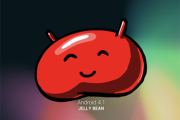BARCENA—If I’ve learned anything from Mobile rld Congress—aside from the fact that most tech journalists can’t speak Spanish very well—it’s that the next year for phones is going to be an exciting one. one makers have really stepped up their game, creating devices that make currently available hsets look like antiques by comparison.
ones like the HTC One, Asus dfone Infinity, Optimus o give us a glimpse into the future have features that will be stard in all phones for the next several months.

But what trends are helping shape that future? After spending some time with as many new smartphones as I could this past week in Barcelona, a couple of developments stood out.
Big, sharp displays quad-core
A 5-inch, 1080p smartphone display might sound like overkill to some. But that extra screen real-estate comes in hy while browsing the b, the high resolution means you can better enjoy your photos, videos, games while on the go. It’s no wonder that so many phones on the trade show floor featured gargantuan screens with pixel densities that put even Apple’s much lauded Retina display to shame.
’s Optimus o has a 5.5-inch display with a pixel density of 400 pixels per inch, while the more modestly sized HTC One packs an astounding 468 pixels per inch into its 4.7-inch display. Compare that to the ione 5’s pixel density of 326 pixels per inch, you have some of the best looking screens on the planet.
wering all those impressive displays are equally impressive processors: l the phones at Mobile rld Congress came packing quad-core processors a bucketful of RAM. saw our fair share of quad-core phones at CES, but seeing more of them here at M confirms our pre-show prediction that quad-core chips are going to quickly become stard in smartphones.
Screens aren’t only getting sharper, but larger as well. The international version of Samsung’s Galaxy Note 8.0 is an 8-inch tablet that can double as a phone, while Asus’ Fonepad is essentially a Nexus 7 than can make voice calls. The Huawei Ascend Mate, a phone first announced at this year’s CES, was a little less excessive with its 6.1-inch screen but you still needed two hs (or freakishly long thumbs) in order to operate it. at once was a race for the smallest cell phone has now become a competition in who can make the largest device possible while still calling it a smartphone.
Android 4.2 is a no show
In contrast to hardware, where phone makers seem to be adding as many innovations as possible, software doesn’t appear to keeping up. Every single Android phone shown at Mobile rld Congress—save for the Yotaone—ships with Android 4.1 lly Bean, the operating system released more than eight months ago at the 2012 I/O. has since launched an updated version of Android lly Bean is expected to announce a new version of Android at I/O in May.
Many of the hsets being touted here at M won’t be out for a few more months. en they do arrive, would-be buyers run the risk of taking on a new phone— its accompanying service contract—with an OS that’s two versions behind the latest build. That leaves them vulnerable to any security exploits that may have been patched in the most up-to-date version of the OS.
The phone makers I talked to all said they had plans to update their devices to the new version of Android lly Bean in the near future, so we can only cross our fingers hope that “the near future” doesn’t mean several months from now.





















